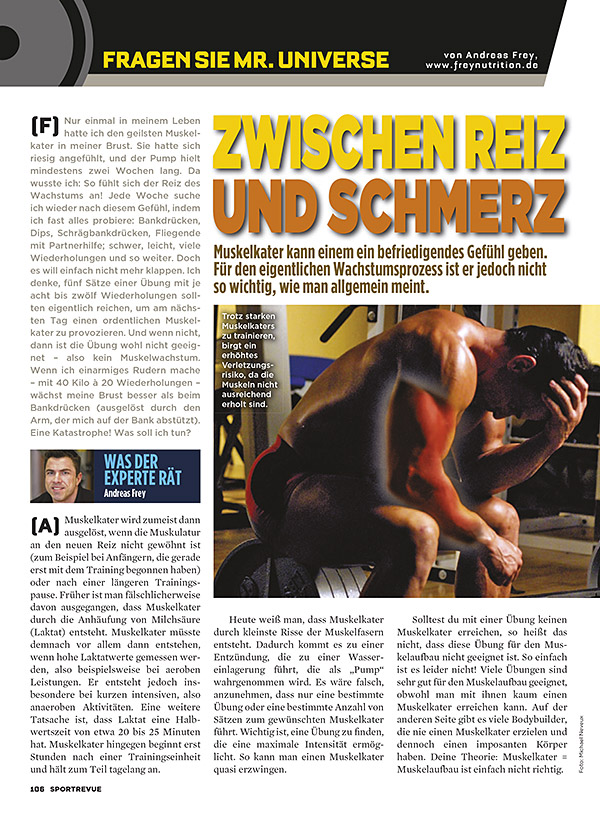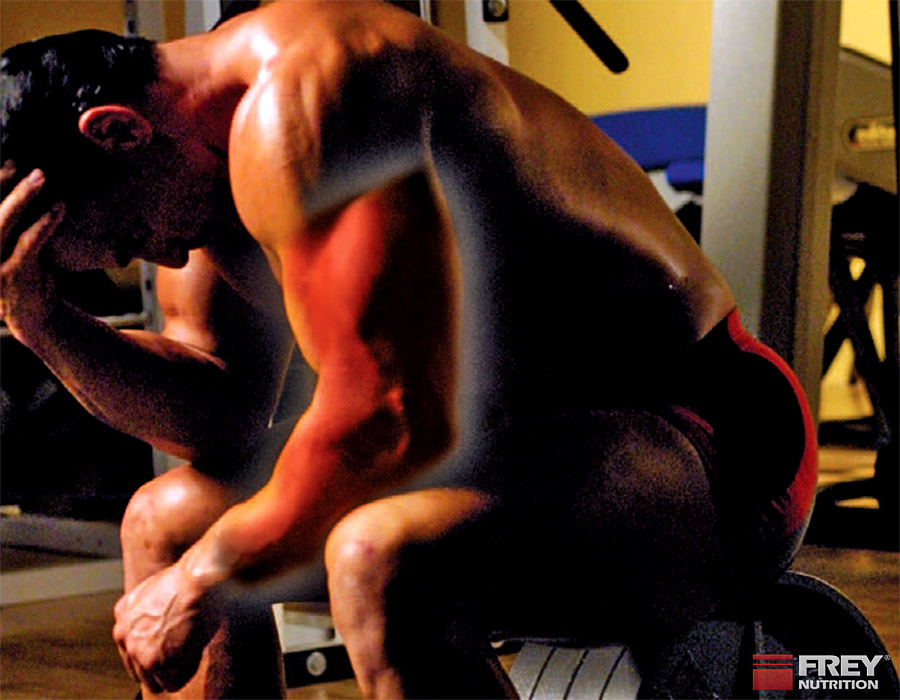COLUMN 54 |
BETWEEN STIMULATION AND PAIN

MUSCLE SORENESS CAN BE A SATISFACTORY FEELING, BUT IT'S NOT AS IMPORTANT TO THE ACTUAL GROWTH PROCESS AS IS GENERALLY BELIEVED.
But it just doesn't work anymore. I think five sets of an exercise with eight to twelve repetitions each should be enough to cause serious muscle soreness the next day. And if not, then the exercise is probably not suitable - so no muscle growth. When I do one-arm rowing - with 40 kilos at 20 repetitions - my chest grows better than when I do bench presses (triggered by the arm that supports me on the bench). A disaster! What should I do?
ANSWER

Today we know that muscle soreness is caused by tiny tears in the muscle fibers. This causes inflammation, which leads to water retention, which is perceived as a "pump." It would be wrong to assume that only a certain exercise or a certain number of sets will lead to the desired muscle soreness. The important thing is to find an exercise that allows maximum intensity. This way you can basically force muscle soreness.
As for your experience of achieving more chest growth by bracing during one-arm rowing than by bench pressing, I seriously doubt that this is really possible. Anatomically speaking, it is very questionable. To achieve maximum progress, you should follow these rules:
- high intensity
- every work set until muscle failure
- Training duration maximum 60 minutes
- explosive repetitions with emphasis on negative movement
- maximum ten sets for large and six sets for small muscle groups
- clean and controlled training
SEND US YOUR QUESTION!
Do you have any questions about bodybuilding, nutrition, training or supplements? Then send us your question by email to: INFO@FREYNUTRITION.DEThis will then be answered personally by Andreas Frey in the form of a column and published here!











